Based in South Africa, Jaco Marx is an acclaimed wildlife, nature, and travel photographer. Above all, he is a conservationist. His passion for animals and caring for the planet are issues that led him to discover photography. You can find more of his striking wildlife work on his website. In this story, he talks about the many reasons ways that opting to shoot in black and white can boost your wildlife photos. Plus, he shares his top tips and tricks how to master your black and white photography. Read on!
Monochrome photography has been around for ages. Some say that the most colorful thing in the world is black and white. It contains all colors, and at the same time, excludes all. For me, it is a beautiful way to use in combination with wildlife photography.
“Why black and white monochrome images in wildlife photography?”
“Why not only color photography?”
“Why not stick to the original scene as seen with your own eyes?”
You may be wondering my reasons for shooting this way.
First, You can tell the same story in a different language. Two pictures can be next to each other, but they can tell two totally different stories and portray two completely different emotions. In these two leopard portraits below, one can see the prominent difference in storytelling.
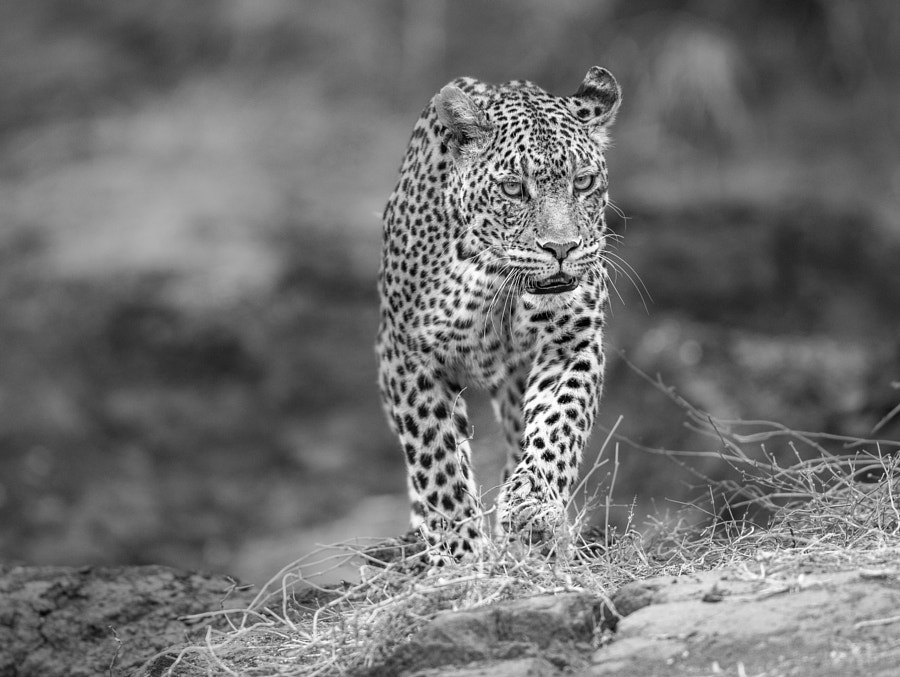
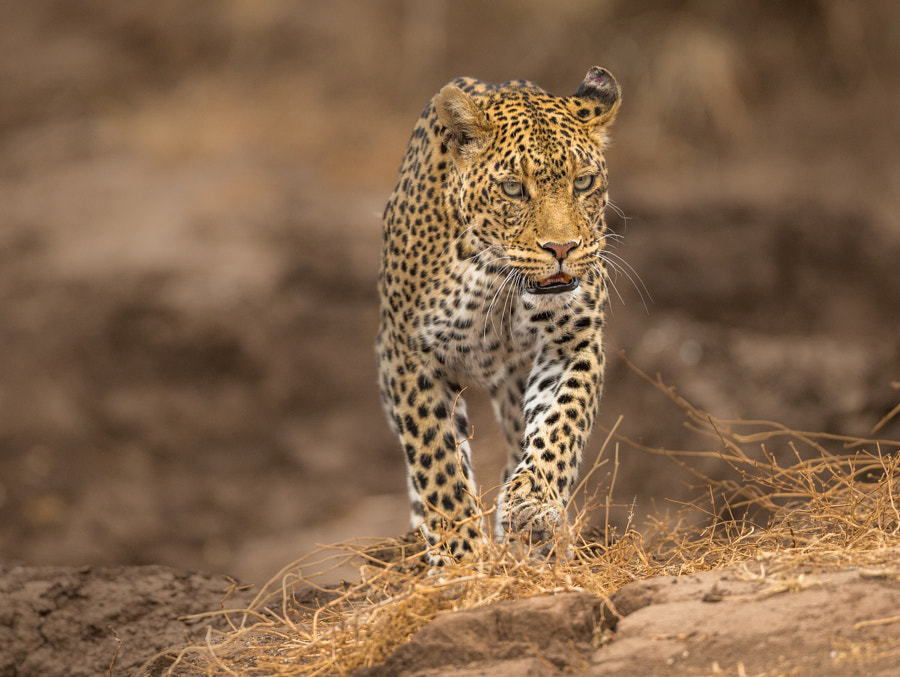
It removes distractions of color, leaving you with a raw image—naked, to be seen for what it really is. In the image below, without any color variations, the wild dog is clearly the main subject.
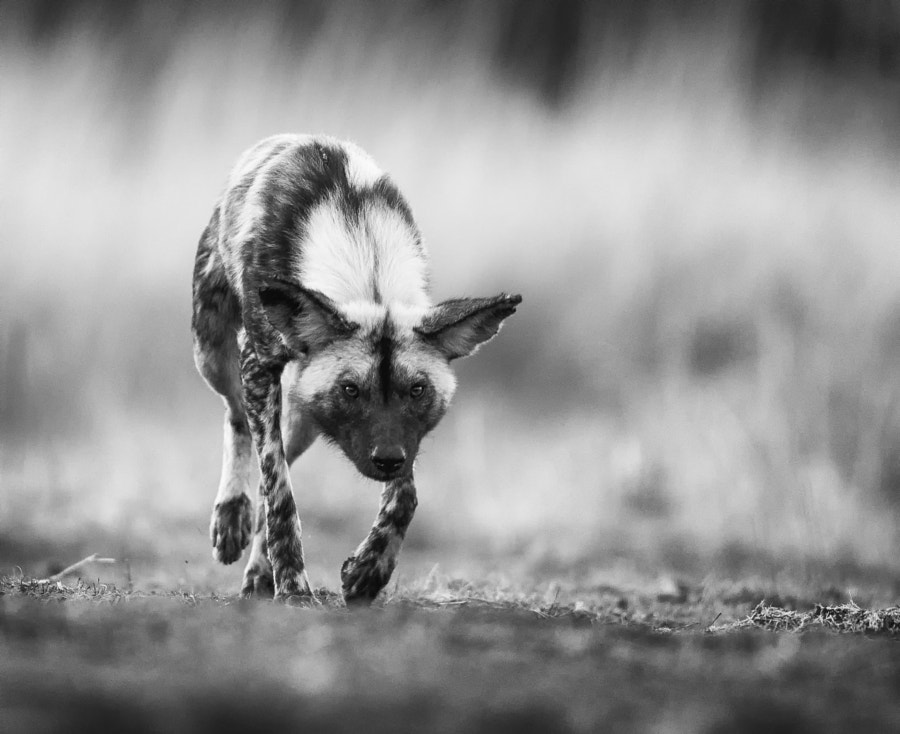
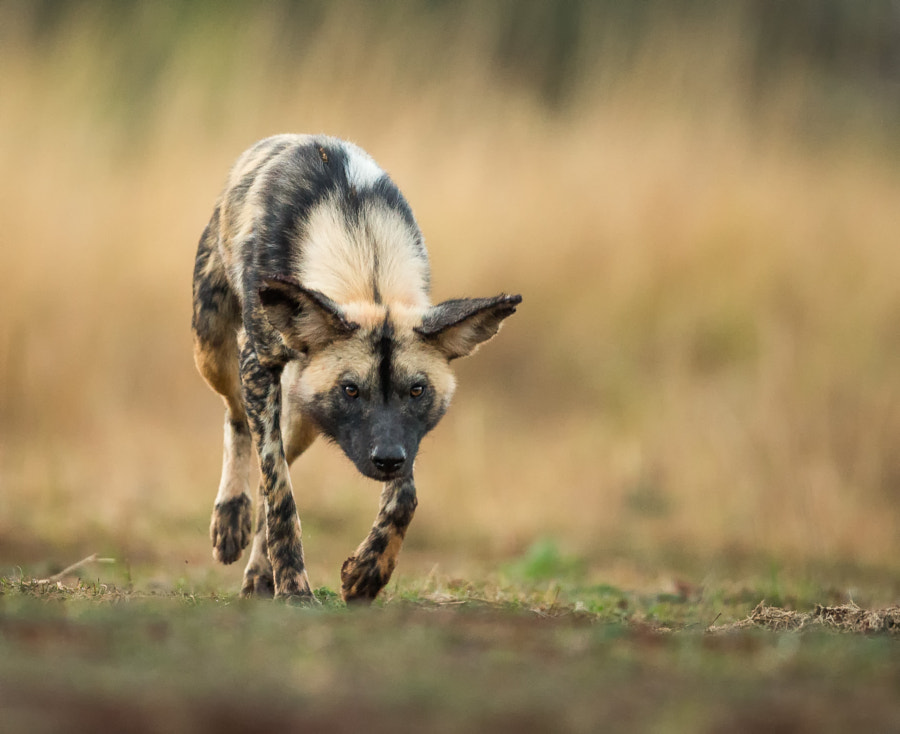
Monochrome conversions are a great way to create nuance and mood to any photograph. This creates a tangible atmosphere. In order to do this, light and tones are used creatively. In the photo below, the mood was created with dust and reflection. This strong effect would never have been possible with color.
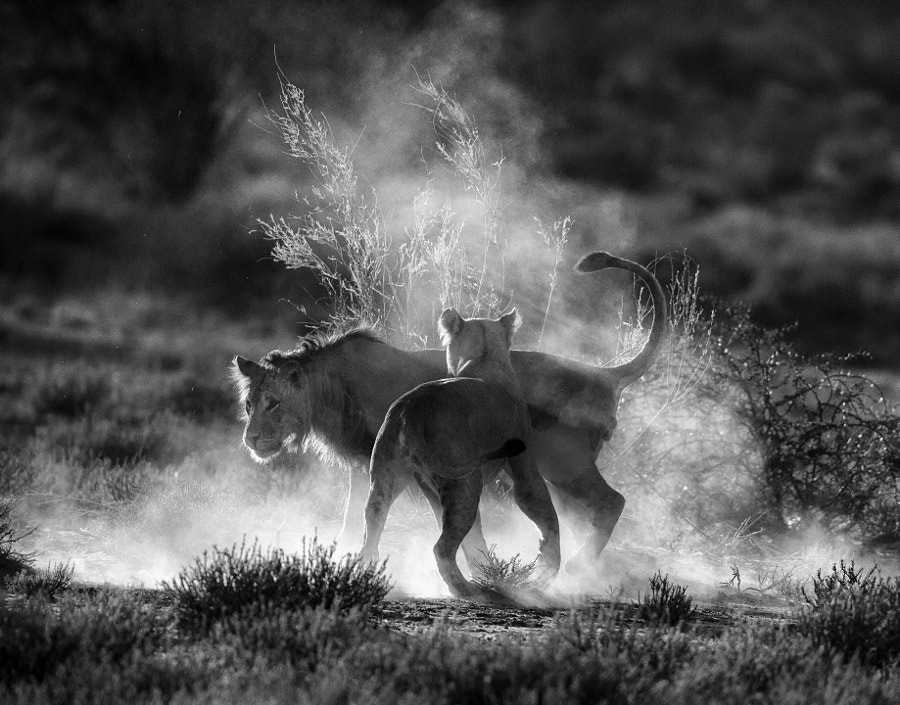
The eye doesn’t search the image for anything else, but the subject matter. The main subject and message can be conveyed very effectively with a well-structured monochrome image.
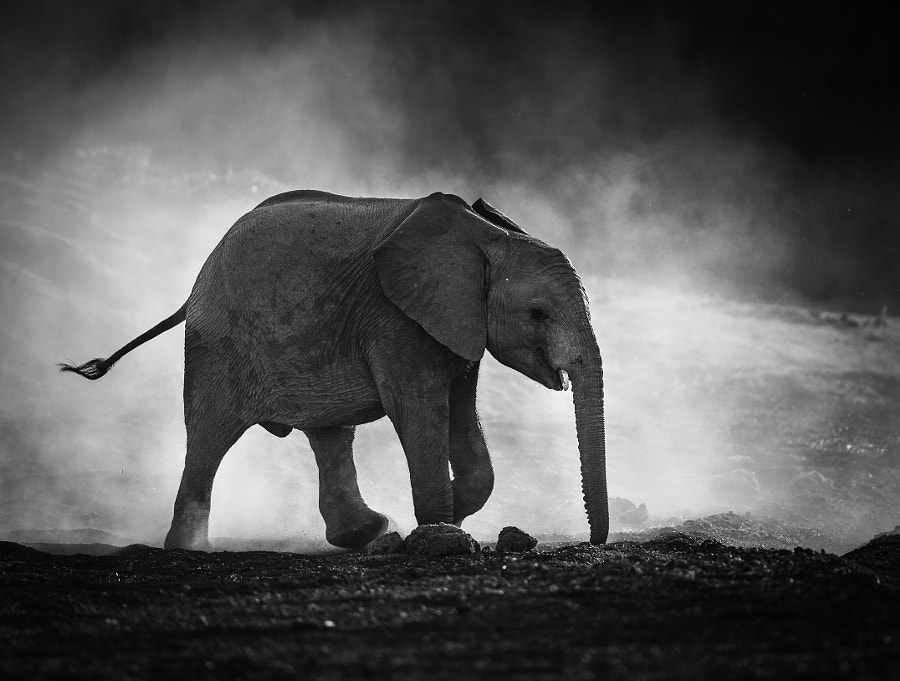
Black and white keeps you focused on the actual composition and texture of the photo. It allows you to focus on shapes, light, shadows, lines, and perspective. That is why some photos look more convincing and compelling in black and white. In this photo of an elephant caught drinking below, you can see that the textures, light, shadows, and tonal range are much more prominent and visible. Another proof that monochrome can be a very effective and strong tool in photography.
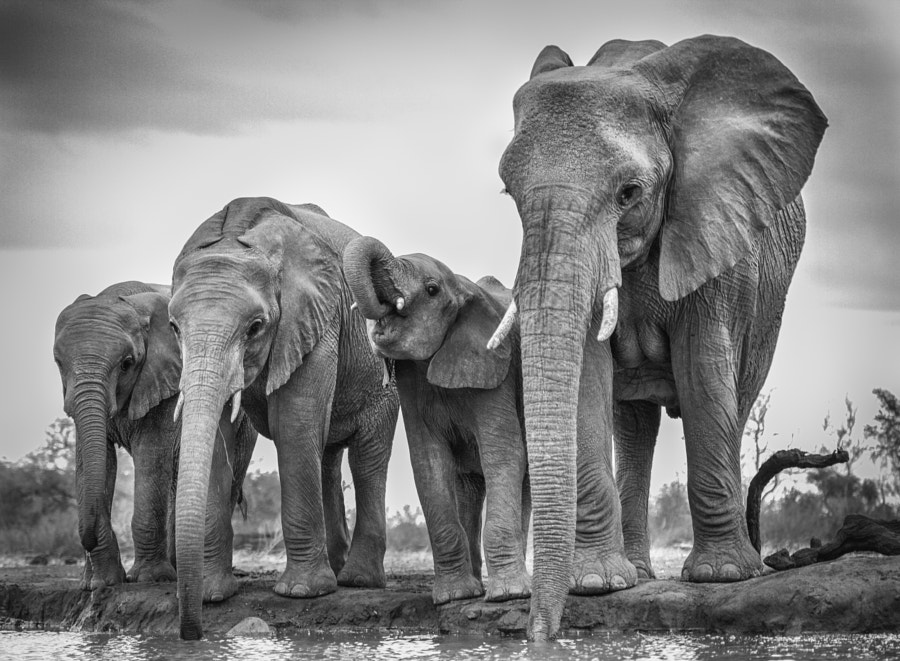
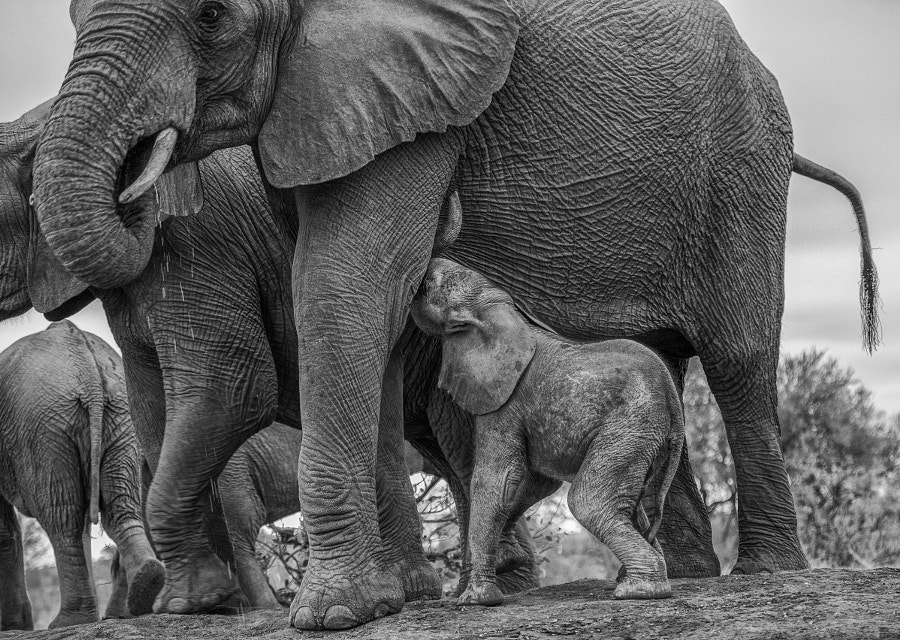
Monochrome images have an artistic feel to them. It is timeless and relevant in any era. They apply to any genre of photography. In the panning photo below, the viewer is looking at a painterly type of image. The effect of this long exposure shot of a wildebeest running is enhanced by viewing it in black and white. Suddenly, wildlife photography has become art.

This photo’s main focus is to illustrate how sun rays can create an artistic backdrop for any wildlife image.
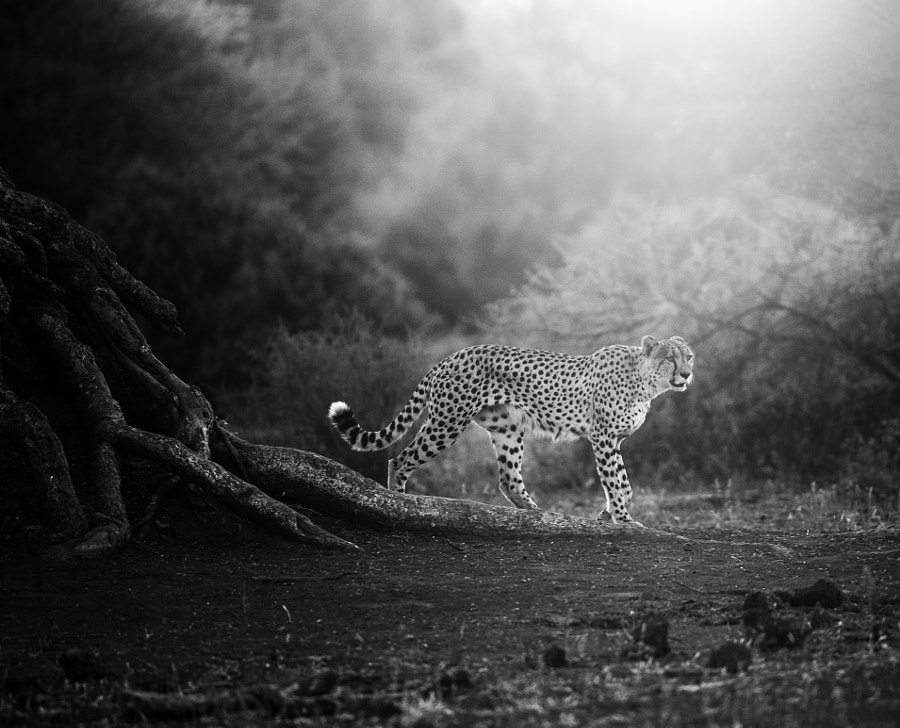
Tips and Tricks for Black and White Wildlife Photography
1. Select a great subject, since colors are absent.
2. Shoot for strong compositions, striking angles, bold textures, and dynamic perspectives.
3. Don’t forget to find good light! Shooting in the early morning or late afternoon works great for monochrome, even without the golden color.
4. In post-processing, make sure the black/white values are correct. This goes hand-in-hand with proper contrast. You need to know your levels and curves in Photoshop.
5. Don’t be afraid to use filters. This includes the red, green, orange, and yellow filters.
6. In a lot of cases, keeping it simple will produce the best results. Go for a clean(-ish) background.
7. Monochrome can be considered as an artistic brach of photography. It’s okay to create noisy images—they add to the drama and story in the frame. Be creative and use subtle effects.
I hope you enjoyed my guide on monochrome conversion, and how truly powerful it is in wildlife photography.
To see more of my work, follow me on 500px, Facebook, and Twitter. Or you can visit my website.